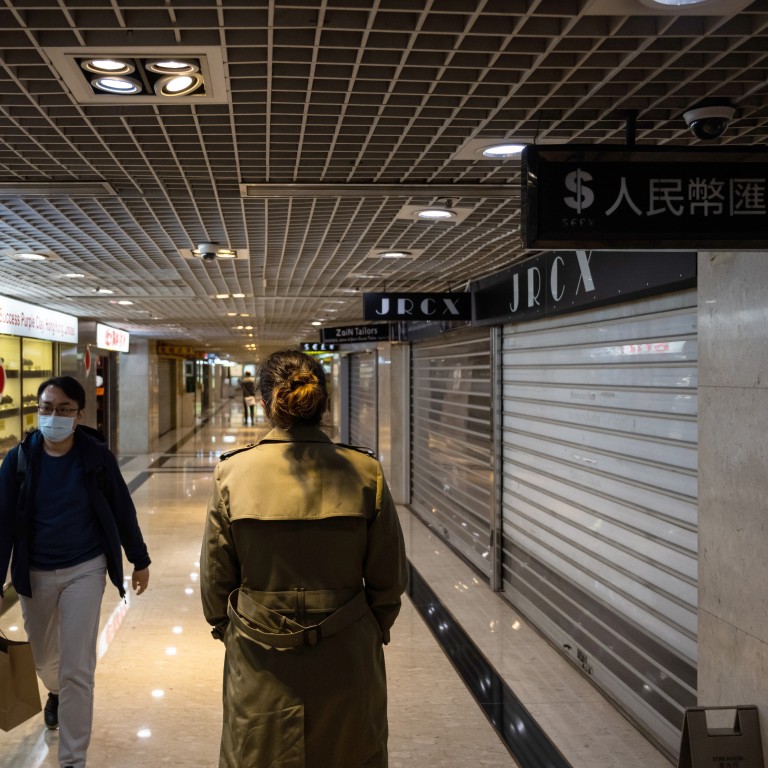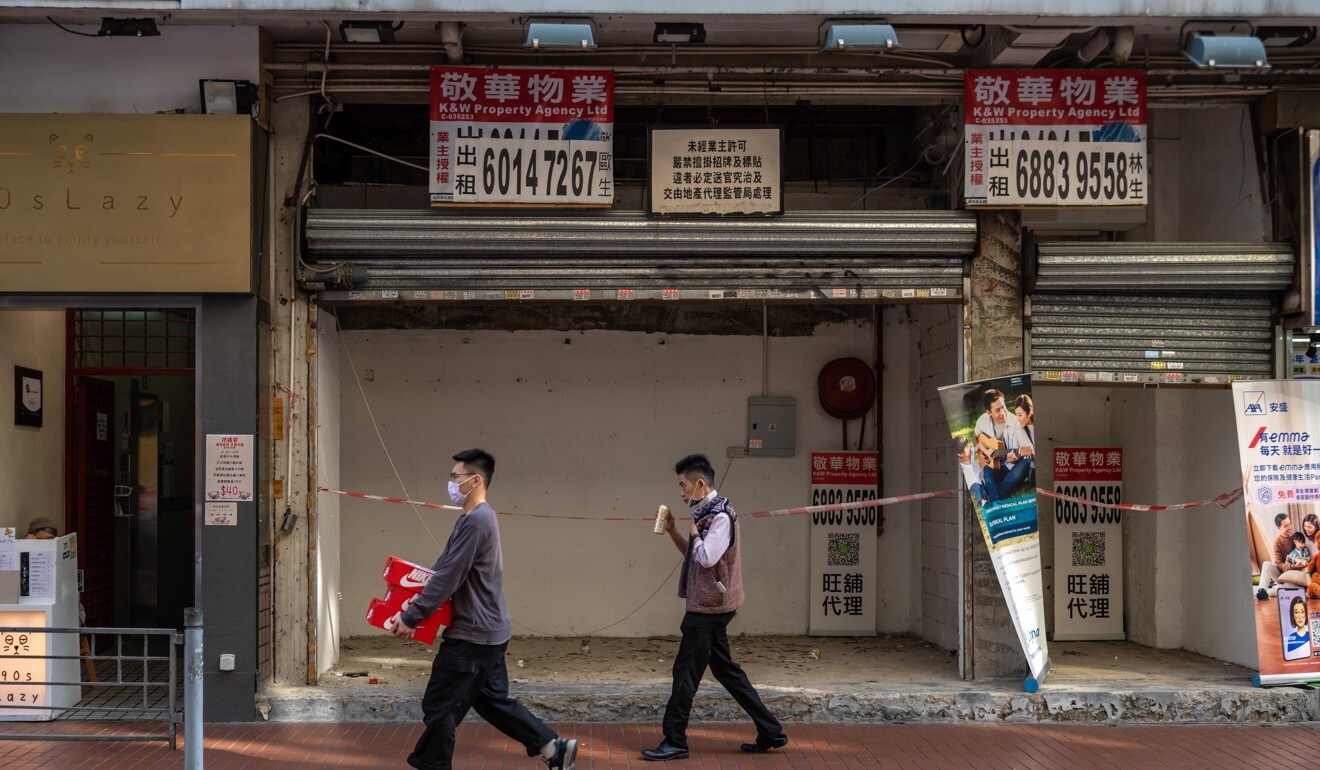
Hong Kong fourth wave: coronavirus-linked slump will continue through first half of 2021, retail body predicts
- The Hong Kong Retail Management Association says sales could remain as much as 30 per cent below 2019 levels for the first six months of the year
- It also warns of a possible wave of lay-offs in the sector following the end of the government’s Employment Support Scheme in November
The Hong Kong Retail Management Association (HKRMA) predicted in its yearly forecast on Monday that the total retail sales value for the first six months of the year would be between 20 and 30 per cent lower than in the same period in 2019.
The drop could be as much as 35 per cent below the first half of 2018, before the rolling shocks of the US-China trade war, 2019’s social unrest and the ongoing coronavirus pandemic took a massive toll on the retail sector.
“Facing the ongoing Covid-19 challenges and [with] inbound tourism [remaining] at a standstill, the association is pessimistic about retail sales performance for the first half of 2021, and the operating environment is expected to be highly challenging,” the HKRMA said in its forecast.

Since November, Hong Kong has been battling a fourth wave of coronavirus infections that has prompted health authorities to tighten social-distancing restrictions, closing bars, gyms and beauty salons for nearly two months.
For most of 2020, total retail sales were already mired in the biggest slump on record, plunging 25.3 per cent during the first 11 months of the year to HK$295 million from HK$395 the same period a year before.
The retail and wholesale sectors represented some 3.4 per cent of Hong Kong’s gross domestic product (GDP) in 2019, according to government figures, with mainland Chinese shoppers accounting for the bulk of purchases of high-value items and luxury goods.
But with travel restricted due to the pandemic, only 3.57 million people visited Hong Kong in 2020, the fewest in 36 years. As a consequence, shopping malls and retail stores have had to rely largely on local consumption.
Liberal Party lawmaker Peter Shiu Ka-fai, who represents the retail industry, said about a third of consumption in recent years had been generated from visitors to the city.

“As long as borders remain closed, Hong Kong’s retail sector will generally suffer a 30 per cent decline,” Shiu said. “Since we have to rely on local consumption to keep businesses afloat, short-term incentives to get people spending again are very much needed.”
Shiu had suggested the government introduce shopping vouchers that residents could spend in designated shops, for instance, by depositing HK$4,000 to HK$5,000 in their Octopus cards, the city’s largest e-payment platform, accepted across tens of thousands of retail and catering outlets.
The HKRMA also warned that once-bustling shopping districts such as Tsim Sha Tsui, Causeway Bay and Mong Kok would turn into “ghost towns” if retailers did not get any rental support from major landlords or the government.
More high street shopfronts, meanwhile, have been left empty as vacancy rates continue to edge higher. Vacancies hit 18.5 per cent in the fourth quarter of 2020, up from 17.7 per cent in the third, according to a report this month from Cushman & Wakefield on the retail property market across Tsim Sha Tsui, Mong Kok, Causeway Bay and Central.

The HKRMA also anticipated a looming wave of lay-offs and business closures following the end of the government’s HK$81 billion Employment Support Scheme in November. With employers no longer required to maintain headcounts to benefit from the scheme, the association feared struggling businesses would make massive cuts to reduce operational costs.
Unemployment in the retail sector hit 7.8 per cent in the fourth quarter of 2020, the fifth-highest jobless rate across all industries, with some 23,200 people out of work.
Terence Chong Tai-leung, an associate professor in economics at Chinese University, said the rate of decline in retail sales had begun to level off, but the sector wasn’t out of the woods yet.
“The decline has been stabilising since the final quarter of last year, and we can expect retail sales to hover at a low point for the first quarter of 2021,” Chong said. “But retail sales may recover from a low base gradually throughout the year if the coronavirus pandemic gets under control.”

